Moth flies, commonly known as drain flies, are frequent and unwelcome visitors in many homes and commercial spaces. Characterized by their small size and distinctive fuzzy appearance, these flies often emerge from drains and damp areas, causing annoyance and hygiene concerns.
In this blog, we will explore effective methods and strategies for addressing how to get rid of moth flies. From identifying the source of the infestation to implementing practical and sustainable solutions, this guide will equip you with the knowledge to tackle and prevent moth fly problems in your environment effectively.
Why is it Important to Get Rid of Moth Flies?
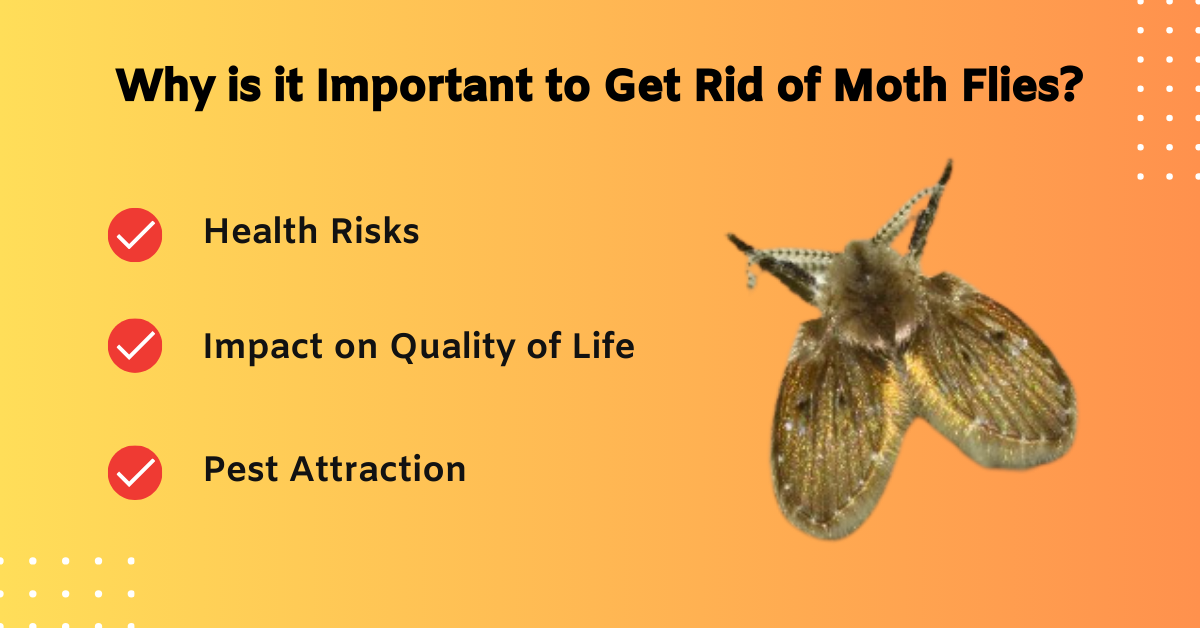
Understanding how to get rid of moth flies is not just about pest control—it’s about safeguarding your home or business environment’s health, comfort, and integrity. While small, moth flies can contribute to a range of issues that underscore the importance of promptly addressing infestations. Here are several reasons why eliminating these pests is crucial:
1. Health Risks
Moth flies are more than a nuisance; they pose several health risks that make it imperative to learn how to get rid of moth flies effectively. These insects are capable of harboring pathogens as they breed and thrive in contaminated environments, such as drains and sewers. While no direct evidence suggests they transmit diseases to humans, the potential for spreading bacteria and other harmful microorganisms from their breeding sites to your living spaces cannot be ignored.
2. Impact on Quality of Life
A moth fly infestation can significantly impact the quality of life in affected homes and businesses. Their presence is often associated with a lack of cleanliness, which can be distressing and embarrassing, especially in settings that require high hygiene standards, such as restaurants, hotels, and hospitals. Moreover, despite regular cleaning efforts, the persistent appearance of these flies can be frustrating and demoralizing for residents and employees alike.
Moth flies aren’t the only nuisance for businesses in the food and hospitality industry. Fruit flies can also pose significant challenges, especially in bars and restaurants where they can affect hygiene standards and customer satisfaction. For targeted advice on managing this common pest, dive into our detailed article on How To Get Rid Of Fruit Flies In Bars And Restaurants. Discover effective methods to keep your establishment fruit fly-free and ensure a pleasant experience for your guests.
3. Pest Attraction
Moth flies can attract other pests, creating a cycle of infestation that can be challenging to break. Their breeding sites provide food and habitat for moth fly larvae and other insects, such as cockroaches and ants. By learning how to get rid of moth flies, you also reduce the food source and breeding grounds for these other pests, helping to keep the overall pest population in check.
While addressing moth fly infestations is crucial, it’s also important to consider the broader spectrum of small insects that can invade your home. For comprehensive strategies covering a range of common household pests, check out our blog on How to Get Rid of Small Insects in the House: 8 Effective Tips. This guide offers valuable insights and practical tips to ensure your living space remains pest-free.
The importance of knowing how to get rid of moth flies extends beyond the immediate annoyance they cause. It touches on health concerns, the quality of life, and the broader ecosystem of pests within a property. For homeowners and businesses, taking proactive steps to eliminate moth flies is critical to maintaining a healthy, comfortable, and safe environment. Pest control professionals play a key role in this process, offering the expertise and solutions needed to address the unique challenges presented by these pests.
How to Identify Moth Flies?
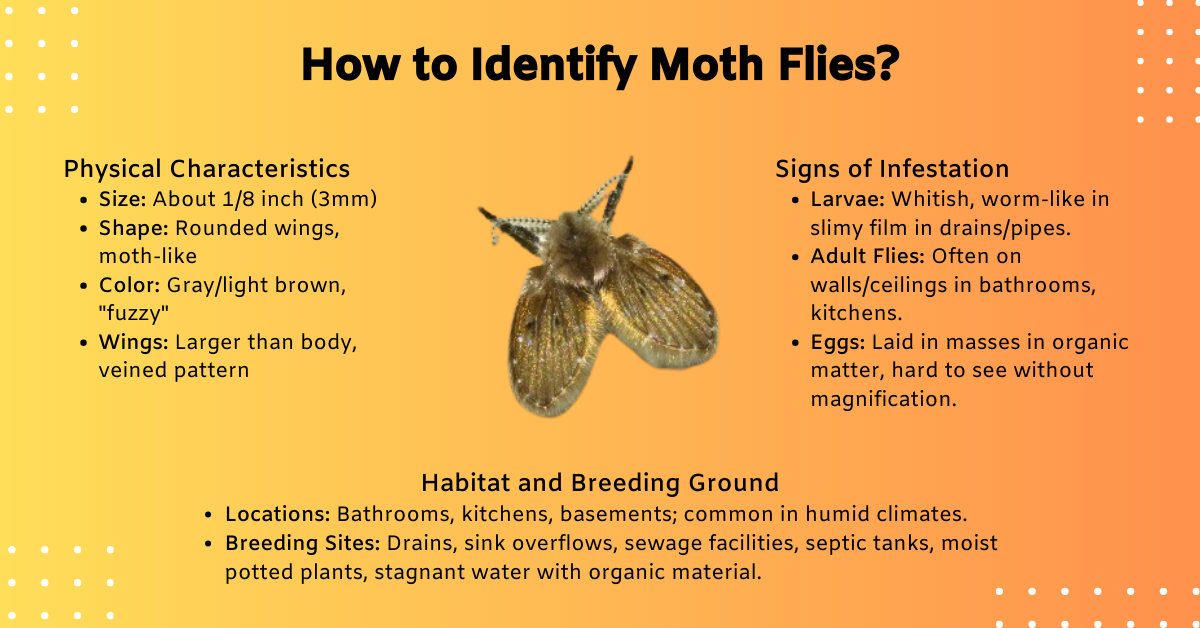
Accurately identifying these pests is crucial before delving into how to get rid of moth flies. Moth flies, also known as drain flies, are small, fuzzy insects that resemble tiny moths but are flies.
They are common in many Indian homes and businesses, thriving in moist environments. Recognizing these pests is the first step in effective pest management. Here are key identifiers to pinpoint moth fly infestations:
Physical Characteristics
- Size and Shape: Moth flies are small, typically about 1/8 inch (3 mm) in length. Their unique, rounded wing shape gives them a moth-like appearance at rest.
- Color: These flies usually have a gray or light brown body, with wings covered in dense hairs, contributing to their “fuzzy” look.
- Wings: Their wings are larger than their body and have a distinct pattern of veins that can be seen upon closer inspection.
Habitats and Breeding Grounds
Moth flies thrive in damp conditions and are often found in bathrooms, kitchens, and basements. These conditions are prevalent in India’s humid climate, making moth fly infestations a common issue. Key breeding sites include:
- Drains and sink overflows where organic matter accumulates.
- Sewage treatment facilities and septic tanks.
- Potted plants with overly moist soil.
- Any stagnant water that has organic material.
Signs of Infestation
Identifying a moth fly infestation involves more than just spotting the adult flies. Look for:
- Larvae: These are found in the slimy film that develops in drains and pipes. They are whitish and worm-like, with a distinct head and a somewhat flattened body.
- Adult Flies: Frequently seen resting on walls or ceilings in infested areas, especially in bathrooms and kitchens.
- Eggs: Though difficult to see without magnification, eggs are laid in masses in the organic matter in drains and other damp areas.
Identifying moth flies is a critical step in addressing their presence. For homeowners and businesses, recognizing the signs of an infestation means prompt action can be taken to mitigate the issue. Pest control professionals play a vital role in this process, offering expertise and solutions tailored. Armed with this knowledge, you’re now better equipped to tackle how to get rid of moth flies, ensuring a healthier environment.
How to Get Rid of Moth Flies: A Step-by-Step Solution
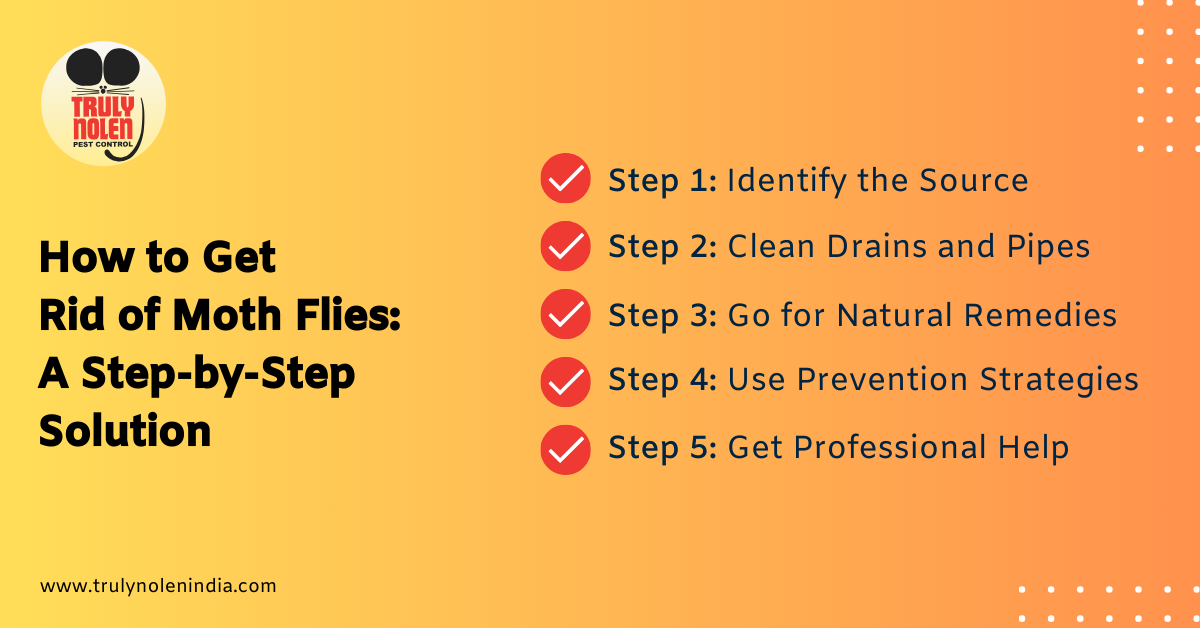
Facing a moth fly infestation can be a daunting challenge, but understanding how to get rid of moth flies effectively is the first step towards reclaiming your space. These tiny pests, often found lurking around drains and moist areas, can quickly become a nuisance in any home or business. With the right approach, however, getting rid of them can be straightforward.
This section offers a comprehensive, step-by-step solution designed to tackle moth fly infestations at their source, ensuring your environment remains healthy and pest-free.
Step 1: Identify the Source
Identifying the source is the foundational step in understanding how to get rid of moth flies effectively. These pests typically breed in areas where organic material and moisture are abundant. Therefore, a thorough inspection of your home or business is crucial.
Pay close attention to drains, as these are common breeding grounds for moth flies. Look for any slimy residue or buildup, which can indicate their presence. Also, inspect any damp areas, such as under sinks, in bathrooms, and basements.
Don’t overlook spaces where organic matter accumulates, like compost bins, garbage disposal areas, and even certain houseplants. You can proceed with targeted measures once you have identified their breeding sites.
Step 2: Clean Drains and Pipes
Regular cleaning of drains and pipes is a fundamental aspect of addressing how to get rid of moth flies. These areas often accumulate organic material, which serves as ideal breeding grounds for moth flies. Ensuring these areas are kept clean can significantly reduce the likelihood of an infestation.
This practice not only aids in getting rid of moth flies but also contributes to overall better hygiene and plumbing maintenance. It’s essential to incorporate routine cleaning of these areas into your regular home maintenance schedule to manage and prevent moth fly problems effectively.
Step 3: Go for Natural Remedies
Moth flies, often a nuisance in damp and poorly ventilated areas, can be effectively controlled using natural remedies. These methods are environmentally friendly and safe for use in homes and commercial spaces. Here are some natural strategies to consider:
- Vinegar and Baking Soda: A classic combination for drain cleaning, this duo creates a fizzing action that helps break down organic matter where moth flies breed. Pouring a mixture of baking soda and vinegar down the drains can be an effective natural remedy for getting rid of moth flies.
- Boiling Water: Regularly flushing drains with boiling water can help dislodge and clear out the gunk and grime that attract moth flies.
- Essential Oils: Some essential oils, like peppermint, eucalyptus, or lavender, can deter moth flies. A few drops in the drains can help keep them at bay.
- Diatomaceous Earth: This natural powder can be sprinkled in and around drains. It dehydrates insects and is a non-toxic way to address moth fly problems.
- Homemade Traps: Creating a trap using a jar filled with apple cider vinegar, covered with plastic wrap, and poked with small holes can attract and trap adult flies.
- Citrus Cleaners: Natural citrus-based cleaners can break down organic matter in drains and emit a scent that repels moth flies.
Step 4: Use Prevention Strategies
Before wrapping up our discussion, it’s important to focus on preventing moth fly infestations. Prevention is often more effective than treatment, and here are some key strategies:
- Maintain Clean Drains: Regularly clean all drains in your home or business. This includes kitchen sinks, bathroom drains, and other potential breeding sites for moth flies.
- Fix Leaks Promptly: Moist environments are breeding grounds for these pests. Repair any leaks in your plumbing to reduce excess moisture and dampness.
- Proper Waste Management: Ensure that garbage, especially organic waste, is properly sealed and disposed of. Compost bins should be covered and located away from your building.
- Use Drain Covers: Install fine mesh drain covers to prevent moth flies from entering and laying eggs.
- Reduce Humidity: Use dehumidifiers in damp areas of your property, such as basements, to create a less attractive environment for moth flies.
- Regular Inspections: Inspect potential breeding sites for signs of moth fly activity. Early detection can prevent a full-blown infestation.
Step 5: Get Professional Help
In some cases, despite diligently following all the steps to get rid of moth flies, the problem may persist or recur, indicating a more severe infestation or an underlying issue that isn’t easily visible. This is when seeking professional help becomes necessary.
Pest control experts have the experience, tools, and specific insecticides unavailable to the general public. They can provide a more targeted and comprehensive solution to your moth fly problem. These professionals can also offer customized advice on how to get rid of moth flies based on the specific conditions of your home or business, ensuring a more effective and long-term solution.
In conclusion, understanding how to get rid of moth flies is essential for maintaining a healthy and comfortable living or working environment. These seemingly small pests can lead to significant issues if not addressed promptly, including health risks, decreased quality of life, and the potential for attracting other pests. By following the step-by-step solutions outlined in this blog, you can effectively tackle moth fly infestations at their source and implement preventive measures to keep them at bay. Remember, the key to a moth fly-free space is diligence in maintenance and readiness to act at the first sign of an infestation.
Say Goodbye to Flies with Truly Pest Solution
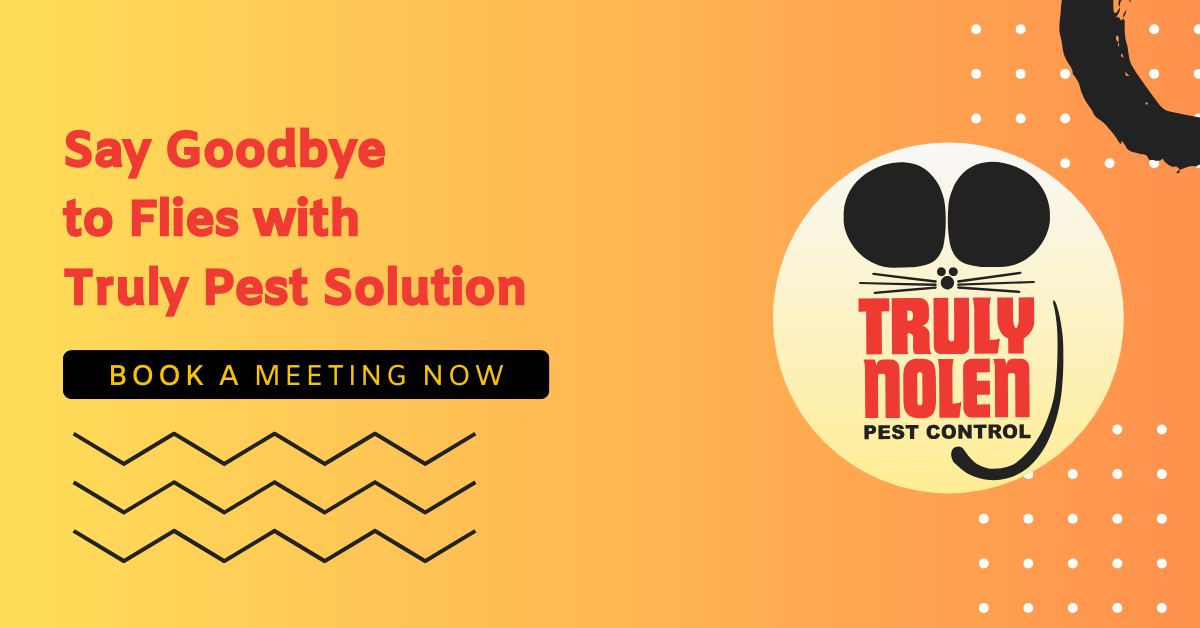
At Truly Pest Solution, we recognize the distinct challenges that flies present in both residential and commercial settings. That’s why we’ve crafted our services to offer more than just temporary fixes. Our Intelligent Fly Control Service (IFCS) leverages the latest pest control technologies and Integrated Pest Management (IPM) principles, providing a comprehensive and enduring solution to your fly-related concerns. We’re dedicated to ensuring your environment is fly-free, safe, and healthy for everyone.
Don’t let moth flies disrupt your peace and comfort. Reach out to Truly Pest Solution today and schedule your free inspection. Let us help you reclaim your space from these unwelcome guests with our expert, environmentally responsible pest control solutions.
Contact Truly Pest Solution and book a free inspection!
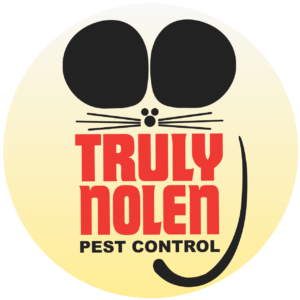
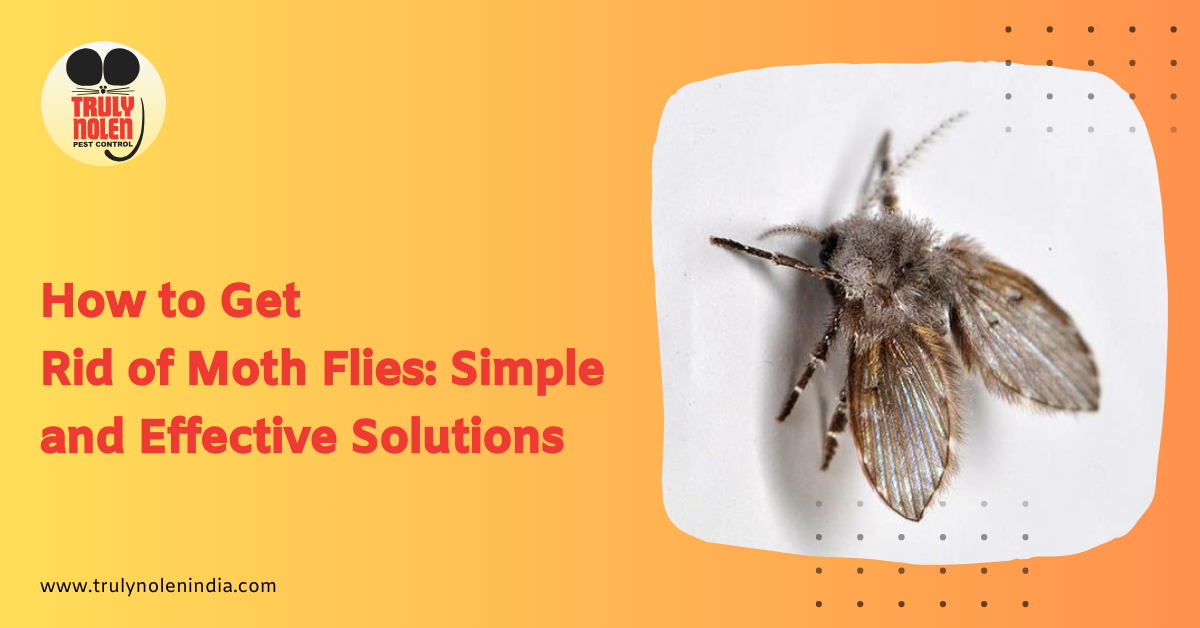
Leave a Reply